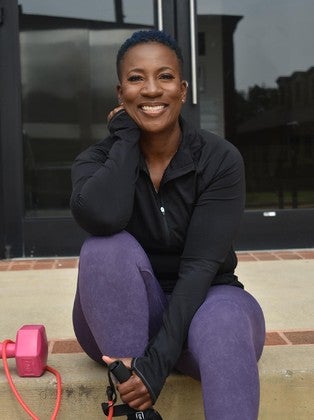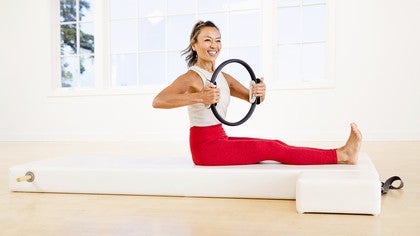
How Pilates Helps Hip Issues
The hip, one of the largest weight bearing joints in the body, is where the thigh bone meets the pelvis to form a ball-and-socket joint. The hip is surrounded and supported by the gluteals, quadriceps, hamstrings, adductors, and the iliopsoas muscle, with major nerves and blood vessels running through it. Why do hip issues seem to be so prevalent? And can Pilates help?
Common causes of hip pain include:
- Arthritis: This is among the most common causes of hip pain. In the United States alone, twenty three percent (more than fifty four million people) have arthritis.The hip is one of the most vulnerable joints in the body for developing arthritis. Risk factors include being older, being a woman, being overweight, a family history of arthritis, and past hip trauma.
- Hip fractures: As we age, our bones can become weak and more brittle. This increases the risk of breaking a hip during a fall. Nine out of ten hip fractures are caused by falls.
- Bursitis: Without getting too technical, bursitis, which is inflammation of the bursae (sacs of liquid found between tissues) can cause pain. This usually occurs when we do lots of activity and overwork or irritate the joint.
- Tendinitis: This is also due to inflammation, in this case of the tendons.
- Muscle Strain: This is another one that can happen from overuse.
My hips are hurting just from writing that. With a family history of arthritis and years of oblivious overuse (because when you’re young, you think you’re invincible) from dancing and teaching high-intensity cardio classes, I am highly aware that it will take a focused effort to keep my hips healthy as I age. While stretching has always been viewed as the best way to keep our hips healthy, there is more we could be doing. Does that “more” include Pilates?
It's...complicated.
Jessica Valant is both a Pilates instructor and physical therapist based in Denver, Colorado. “Hips are complicated for a few anatomical and biomechanical reasons,” she says. “They are one of only two ball and socket joints in the human body, so they have a big range of motion. That's awesome for function, but it can cause problems from an injury standpoint. They are the joint where our lower extremity meets our torso, so a lot of force transfers through the joint. Also, many muscles cross the joint that then cross over the pelvis as well, so it’s impossible to separate the hips from the pelvis. They are completely related.”
“Pilates offers strengthening in that vast range of motion,” Valant says. “Squats and lunges are awesome and so needed for function, but they only work in one plane of motion. Pilates, by providing lighter resistance, works in all the external and internal rotation and into full hip extension in a safe way. Also I love weight-bearing and closed chain Pilates work for the hips, so the Reformer is especially awesome.”
The Workhorse of the Body
John Garey, founder of John Garey Fitness & Pilates in Long Beach, California, agrees. “The hip, being a true ball and socket joint, allows for so many different movements. The largest and most powerful muscles in the body cross the hip joint. So whether you’re working on the mat with amazing side lying, Side Leg lift series or performing the Shoulder Bridge, Swimming or Double Leg Kick, the muscles around the hip are doing the job. Those muscles are workhorses so don’t be afraid to challenge yourself,” he says.
“If you have access to the Pilates equipment, try the Starter Series on the Reformer for outer and inner thigh muscles, the Magician series on the Cadillac for the glutes and hamstrings, and the Side Leg lift on the chair, one of the most challenging and fun, advanced exercises,” he adds.
How Pilates Helps Hips
Pilates can also be a great rehabilitation tool if you’re already injured, such as from an overuse injury, or you are coming back from a full hip replacement and looking to recover, rebuild strength, and find something that you can continue to do over the long term. Pilates schools are even now creating specialized programs for physiotherapists and medical professionals to work in conjunction with the healing process. Brent Anderson, who is not just a Pilates teacher but also a physical therapist and has had hip replacement surgery himself, shares his pre- and post- surgery experience in a new video series on our site and demonstrates exercises he used during his process. Pilates, ideally practiced with guidance from a certified instructor who can modify the exercises as needed (props, feet flat, bent knees, and bent knees, anyone?) can be customized as the client transitions from one stage of rehabilitation to the next.
In short, Pilates offers tools for prevention and that can keep us moving and mobile for years to come.
Comments
You need to be a subscriber to post a comment.
Please Log In or Create an Account to start your free trial.















